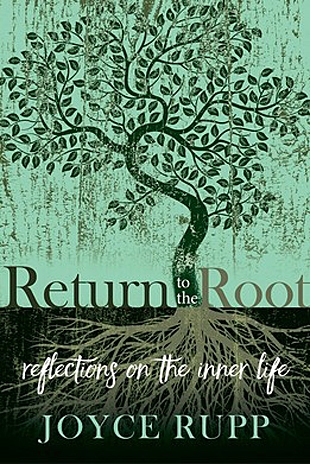Sister Joyce Rupp has long been one of our favorite spiritual teachers, of any religious tradition. She is a Catholic nun of the Servite Order, a noted hospice worker, and the author of many books. You can read much more about and from her here in her Living Spiritual Teacher profile.
The chapters of this book originated in the messages Rupp has written for many years in her monthly newsletters. She selected among those and expanded on them.
An introduction speaks of the inspiration she draws from Rumi and Sufi teacher Kabir Helminski on how to realize “the essential Self” on the way toward wholeness. Sister Joyce explains: “From my perspective, this essential Self that Rumi encourages us to join consists of the abiding love reflected in the heart of Christ, a divine wisdom residing at the core of every being.” With this generous, interreligious spirit she proceeds to reflect on subjects such as love, prayer, breath, elderhood, service, gratitude, and stillness.
Throughout the book, an emphasis is placed upon “rootedness and stillness” as essential for every person’s well-being. Rupp writes: “The content of this book aims to strengthen your inner rootedness, to draw forth that loving nourishment contained in the Taproot of your deepest self.” Return, she encourages the reader, “to the Root of your root.”
Quotations from other great spiritual teachers — such as John Main, Mirabai Starr, Barbara Brown Taylor, Martin Luther King Jr., Ilia Delio, bell hooks, Sharon Salzberg, and Cynthia Bourgeault — head each short chapter. Many of the chapters also include one of Rupp’s original poems. The book is designed to be read from January through December, and the chapters at times reflect the changing of seasons, both natural and from the Christian year, and the coming of holidays.
She has a beautiful way of seeing the world and offering spiritual lessons through her vision. For example, one late chapter is called “Sipping from Mud Puddles.” It includes this:
“I thought of 'soul resilience' when I went for my daily walk after a heavy rain shower. A bright red cardinal sipping from a mud puddle in the middle of the path caught my attention. As I watched the bird’s quiet, easy way of drinking, I wondered about the taste of that cloudy water. I didn’t notice any distasteful grimaces from the bird. The cardinal seemed quite satisfied and kept on sipping. The griminess in that puddle reminded me of what life resembles during troublesome periods. We have to be satisfied with a lack of clarity in our mud-puddle stage, to find what can nourish and sustain us until better days. Maybe brief glimmers of hope, a message of reassurance, or a voice of empathy provide the only sustenance available when we are deeply troubled or overwhelmed with what feels like way too much to handle.”
She begins the next paragraph: “Being with people who know how to sip from mud puddles often restores my belief and trust in soul resilience.”
Rupp sees in the natural world many things that give her hope and teach her lessons of truth. She begins another chapter by saying, “While on retreat, I learned a lot from sitting in front of an aged maple tree with broad branches.” And, in a chapter poised between autumn and winter, she reflects: “When November arrives, the land enters a transitional phase, a passageway from a source of plenty to a place of barrenness…. We humans also have our seasonal fullness and emptiness…”
We feel you will find much to root you in these pages.
